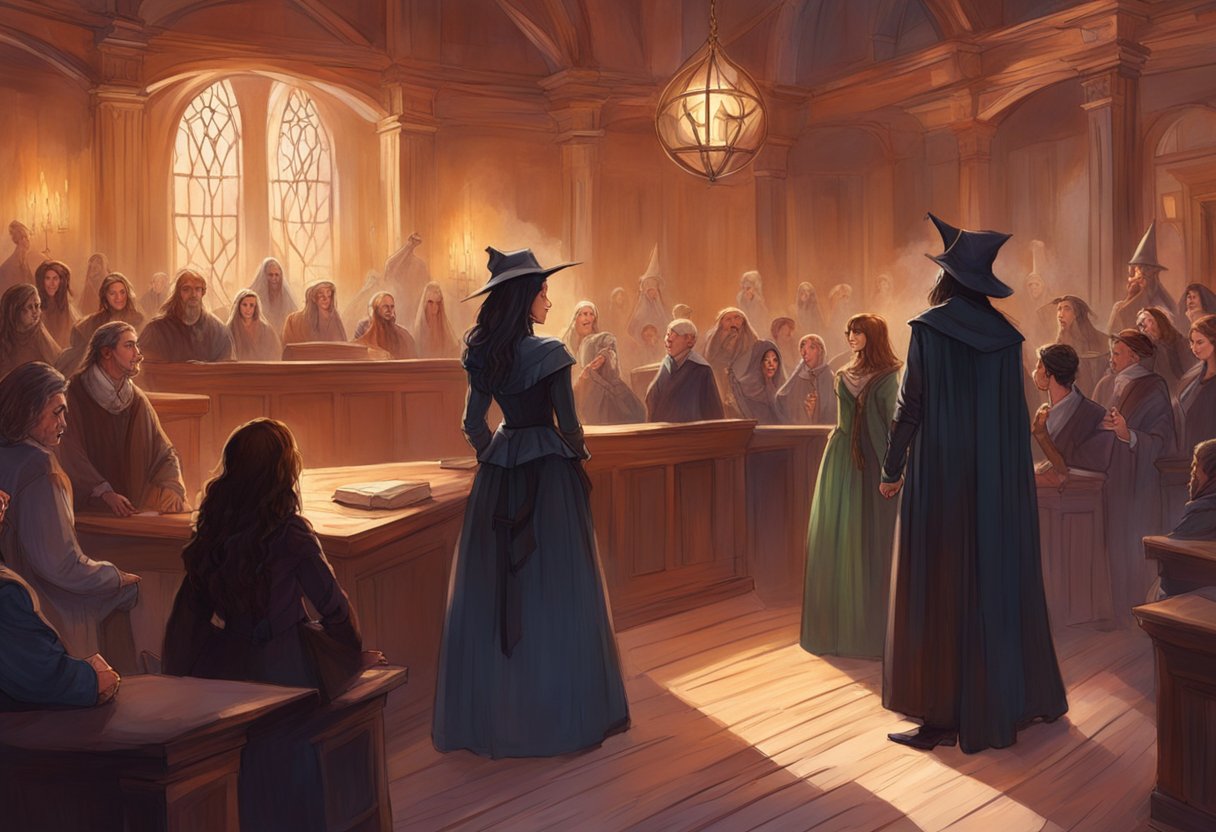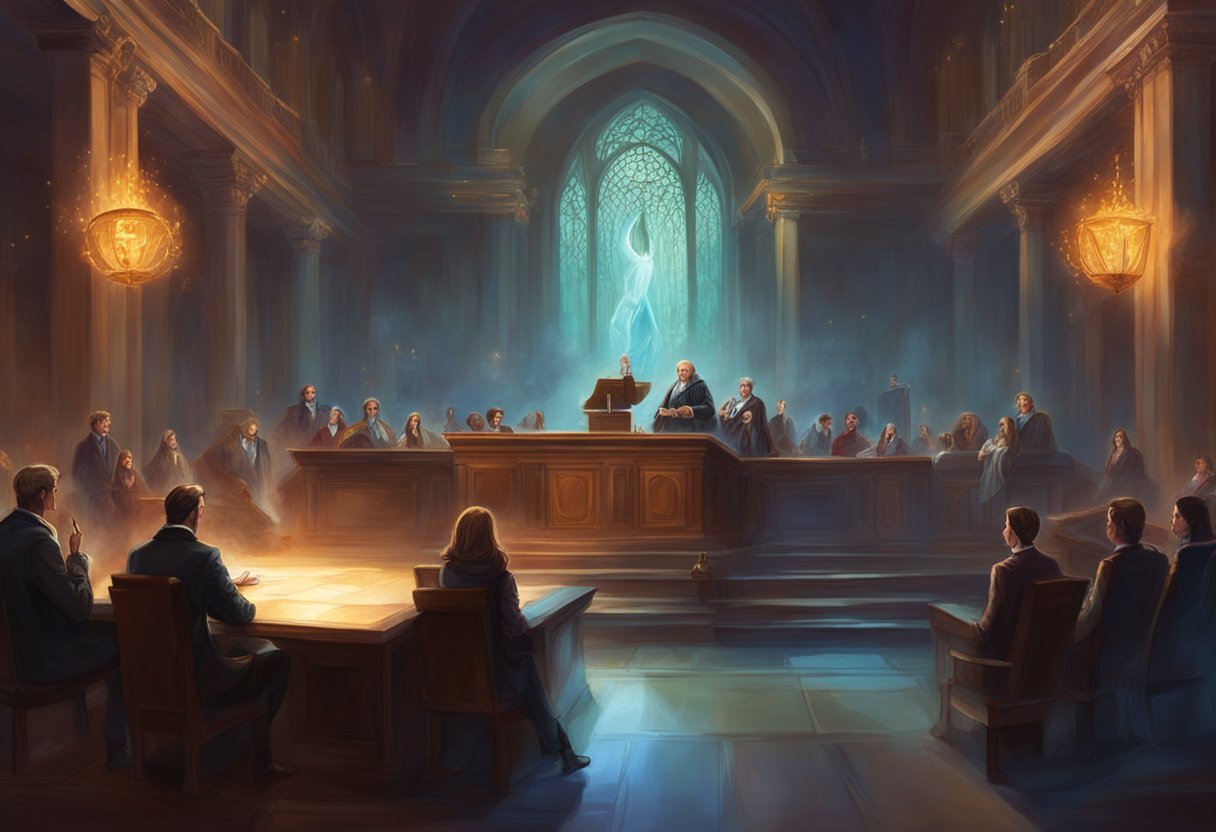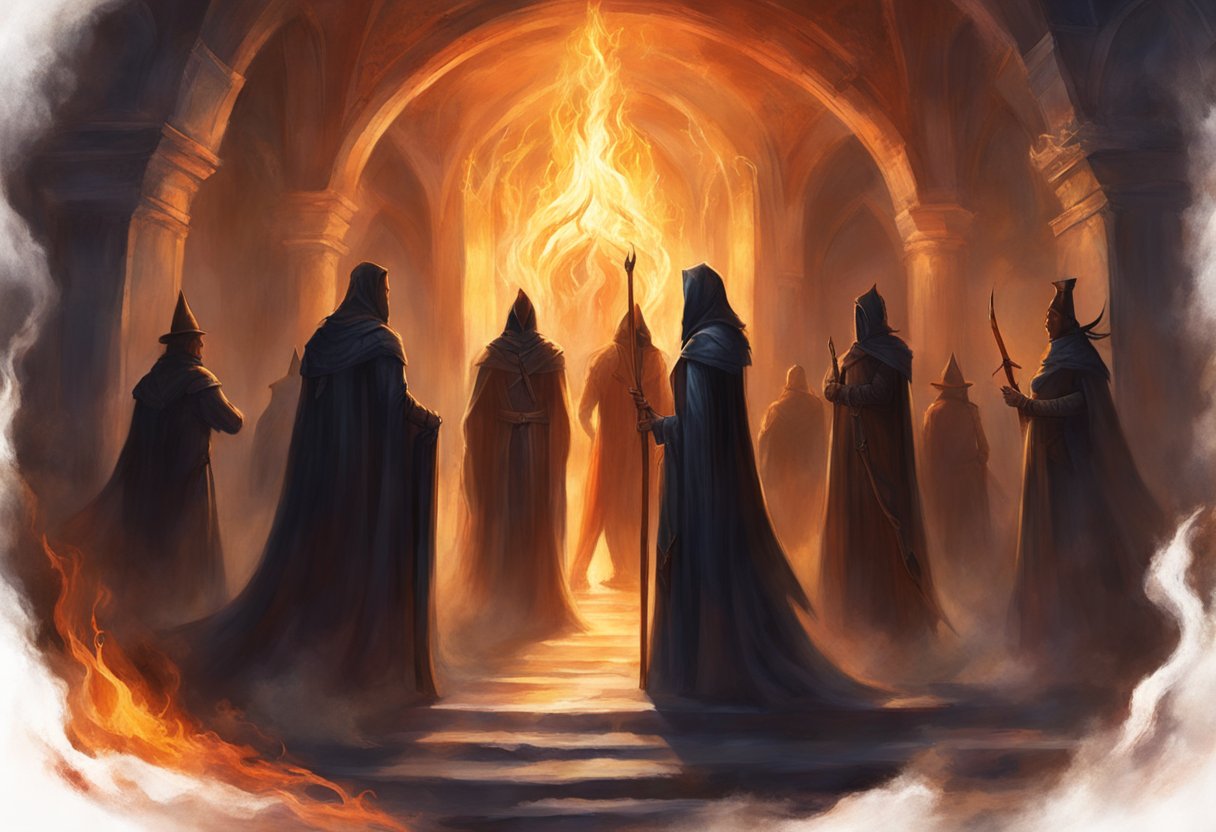The Crucible is a play written by Arthur Miller and first performed in 1953. The play is set in the Puritan town of Salem, Massachusetts, during the Salem witch trials of 1692, but it is widely recognized as an allegory for the Red Scare and McCarthyism of the 1950s. The play explores themes of mass hysteria, persecution, and the dangers of groupthink.
Miller wrote The Crucible during a time of great political tension in the United States. The country was gripped by the fear of communism, and many people were accused of being communist sympathizers without any evidence to support the accusations. The play uses the witch trials as a metaphor for the McCarthy hearings, with characters in the play being accused of witchcraft just as people in real life were being accused of being communists. The play’s message is clear: when fear and paranoia take hold, innocent people can be persecuted and punished.
Historical Context of ‘The Crucible’

McCarthyism and the Red Scare
During the 1950s, the United States was gripped by a wave of fear and paranoia known as McCarthyism. This was a time when accusations of Communist sympathies could ruin a person’s career and reputation. Senator Joseph McCarthy led a campaign to root out supposed Communist sympathizers in the government, entertainment industry, and other areas of American life. This atmosphere of suspicion and fear is reflected in Arthur Miller’s play, “The Crucible,” which was written during this period.
Miller wrote “The Crucible” as an allegory for the Red Scare and McCarthyism. The play depicts a small town in Massachusetts in 1692, where a group of young girls accuse their neighbors of witchcraft. The accusations spread like wildfire, and soon the entire town is caught up in a frenzy of fear and suspicion. The play shows how easily people can be manipulated by fear and how dangerous it is to allow accusations to go unchecked.
Salem Witch Trials
“The Crucible” is also set against the backdrop of the Salem Witch Trials, which took place in Massachusetts in 1692. These trials were a series of hearings and prosecutions of people accused of witchcraft. The trials resulted in the execution of 20 people, most of them women. The trials were fueled by superstition, fear, and religious extremism, and they have since become a symbol of the dangers of hysteria and intolerance.
Miller used the Salem Witch Trials as a historical parallel to the Red Scare. He saw both events as examples of how fear and paranoia can lead to the persecution of innocent people. “The Crucible” is a powerful reminder of the dangers of intolerance and the importance of standing up for what is right, even in the face of overwhelming opposition.
Main Themes in “The Crucible”

“The Crucible” by Arthur Miller is a play that explores several themes that are still relevant today. The play is set in Salem, Massachusetts, in the late 1600s, during the infamous Salem Witch Trials. The themes in the play are Hysteria and Ideology, Accusation and Integrity, and Power and Manipulation.
Hysteria and Ideology
One of the main themes in “The Crucible” is Hysteria and Ideology. The play explores how hysteria and ideology can cause people to act irrationally and make false accusations. In the play, the villagers of Salem become hysterical and believe that witches are among them. They accuse innocent people of witchcraft without any evidence, leading to the deaths of many innocent people.
Accusation and Integrity
Another important theme in “The Crucible” is Accusation and Integrity. The play explores how accusations can destroy a person’s reputation and integrity. In the play, John Proctor is accused of witchcraft by Abigail Williams, a young girl who he had an affair with. Proctor tries to clear his name by admitting to the affair, but this only makes things worse for him. The play shows how accusations can lead to the destruction of a person’s life, even if they are innocent.
Power and Manipulation
The third theme in “The Crucible” is Power and Manipulation. The play explores how people in positions of power can manipulate others for their own gain. In the play, Abigail Williams manipulates the other girls in Salem to accuse innocent people of witchcraft. She does this to gain power and control over the town. The play shows how people can abuse their power and manipulate others to achieve their own goals.
In conclusion, “The Crucible” is a play that explores several important themes. The themes of Hysteria and Ideology, Accusation and Integrity, and Power and Manipulation are still relevant today. The play shows how these themes can lead to the destruction of innocent lives and how people can abuse their power and manipulate others for their own gain.
Character Analysis and Allegory

John Proctor as a Tragic Hero
John Proctor, the protagonist of “The Crucible,” is a tragic hero who struggles with his conscience throughout the play. He is a man of integrity who has committed adultery with Abigail Williams, one of the accusers. He is a symbol of the common man who is caught up in the hysteria of the witch trials. His tragic flaw is his pride, which prevents him from confessing to his adultery and saving his life. He chooses to die instead of compromising his principles, which is the ultimate act of heroism.
Abigail Williams’ Representation of False Accusation
Abigail Williams, one of the main accusers in “The Crucible,” is a symbol of false accusation. She is a manipulative and vindictive character who accuses innocent people of witchcraft to cover up her own wrongdoing. She is a master of deception who uses her power to control and manipulate others. Her accusations spark the witch trials, which result in the deaths of many innocent people. She is a warning against the dangers of hysteria and the consequences of false accusation.
Reverend Hale’s Transformation
Reverend Hale, a respected minister from Beverly, is initially a staunch supporter of the witch trials. He is an expert on witchcraft and is called to Salem to help with the investigations. However, as the play progresses, he begins to question the validity of the accusations. He realizes that innocent people are being accused and executed based on false evidence. He undergoes a transformation from a believer to a skeptic and finally to a critic of the trials. He is a symbol of the power of reason and the importance of questioning authority.
In conclusion, the characters in “The Crucible” are not just individuals but symbols of larger ideas. They represent the dangers of pride, false accusation, and blind faith. The allegory of the play is a warning against the dangers of hysteria and the importance of maintaining one’s integrity in the face of adversity.
Symbolism in “The Crucible”

The Witch Trials as an Allegory of McCarthyism
“The Crucible” by Arthur Miller is a play that uses the Salem witch trials of 1692 as an allegory for the McCarthyism of the 1950s. In the play, Miller explores how fear, suspicion, and hysteria can lead to false accusations, persecution, and even death. The witch trials in the play represent the anti-communist hysteria of McCarthyism, which was characterized by the fear of communism, the persecution of suspected communists, and the blacklisting of artists, writers, and intellectuals.
Miller uses several symbols in the play to represent the fear and paranoia of McCarthyism. For example, the witch hunt in the play represents the search for suspected communists during the Red Scare. The accusations of witchcraft in the play represent the accusations of communism during the hearings of the House Un-American Activities Committee. The trials and executions of innocent people in the play represent the persecution of innocent people during the Red Scare.
The Crucible as a Symbol of Judgment
Another important symbol in “The Crucible” is the crucible itself. The crucible is a container used for melting metals and purifying them. In the play, the crucible represents the process of judgment and purification. The characters in the play are put through a crucible of sorts as they are forced to confront their fears, their prejudices, and their moral values.
The crucible also represents the idea of transformation. The characters in the play are transformed by their experiences in the crucible. Some characters, like John Proctor and Elizabeth Proctor, are transformed for the better as they confront their past mistakes and find redemption. Other characters, like Abigail Williams and Reverend Parris, are transformed for the worse as they succumb to their fears and their desires for power.
In conclusion, “The Crucible” is a powerful allegory that uses the symbols of the witch trials and the crucible to explore the themes of fear, suspicion, and judgment. Miller’s play reminds us of the dangers of hysteria and the importance of standing up for our beliefs, even in the face of persecution and death.
Modern Relevance of ‘The Crucible’
Allegory for Contemporary Political Situations
Arthur Miller’s ‘The Crucible’ is a powerful allegory that resonates even in contemporary political situations. The play’s central theme of mass hysteria and the dangers of false accusations is particularly relevant in today’s world of social media and cancel culture. The play highlights the importance of critical thinking and the need to question authority, especially in situations where fear and panic are used to manipulate public opinion.
‘The Crucible’ also serves as a cautionary tale against the abuse of power by those in authority. The play shows how the Salem witch trials were used to settle personal scores and eliminate political opponents. This is a lesson that is still relevant today, as we see politicians and leaders using similar tactics to silence dissent and consolidate their power.
Lessons on Mass Hysteria
Another important lesson that ‘The Crucible’ teaches us is the dangers of mass hysteria. The play shows how fear and paranoia can spread like wildfire, leading to irrational behavior and the persecution of innocent people. This is a lesson that is particularly relevant in today’s world, where social media and other forms of mass communication can quickly amplify fear and panic.
‘The Crucible’ also highlights the importance of standing up for what is right, even in the face of overwhelming opposition. The play’s protagonist, John Proctor, is a flawed but ultimately heroic figure who refuses to compromise his principles, even when it means risking his own life. This is a message that is still relevant today, as we see individuals and groups standing up against injustice and oppression, even when it means going against the prevailing social norms.
In conclusion, ‘The Crucible’ is a timeless work of literature that continues to resonate with audiences today. Its themes of mass hysteria, false accusations, and abuse of power are still relevant in contemporary political situations, and its lessons on critical thinking, standing up for what is right, and the dangers of fear and panic are more important than ever.
Critical Reception and Interpretations
Initial Critical Response
When Arthur Miller’s play “The Crucible” was first performed in 1953, it received mixed reviews from critics. Some praised the play’s powerful message about the dangers of mass hysteria and the importance of standing up for one’s beliefs, while others criticized Miller’s use of historical events to comment on contemporary issues.
Despite the mixed reviews, “The Crucible” quickly became a popular and influential work of American theater. It was performed on Broadway for over 600 performances and has since been produced countless times in theaters around the world.
Evolving Interpretations of the Play
Over the years, the critical reception of “The Crucible” has evolved as scholars and audiences have reexamined the play’s themes and historical context. One of the most significant interpretations of the play is its allegorical connection to the Red Scare and McCarthyism of the 1950s.
Many scholars have argued that Miller’s portrayal of the Salem witch trials was actually a commentary on the anti-communist hysteria that was sweeping the United States at the time. Miller himself was called before the House Un-American Activities Committee and was accused of being a communist sympathizer, which may have influenced his writing of “The Crucible.”
Despite the play’s historical context, its themes of mass hysteria, fear, and the importance of standing up for one’s beliefs continue to resonate with audiences today. “The Crucible” remains a powerful work of American theater and a testament to the enduring power of drama to comment on the human condition.

